Form I-485 Step-by-Step
Last Updated: January 15, 2020.
What is the Form I-485?
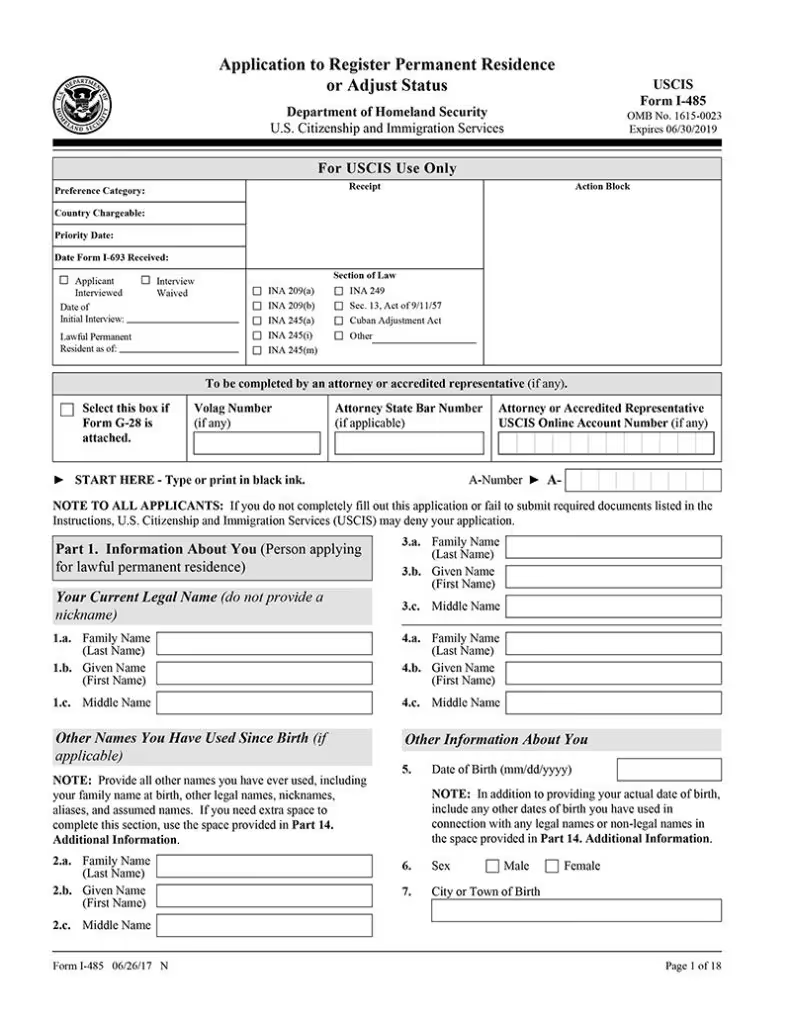
The Form I-485, Application to Register Permanent Residence is the form used to apply for Lawful Permanent Residence (also known as holding a green card).
"Adjustment of status" (AOS) is the process by which an immigrant applies to adjust his or her status from "nonimmigrant" to "immigrant".
Once your application is approved by USCIS, you can live and work in the United States indefinitely, and possibly apply to become a naturalized citizen later.
How to Apply for Lawful Permanent Residency
Applying to become a lawful permanent resident in the United States means submitting the Form I-485 with it's required supporting documents (Form I-130, Form I-693, Form I-864, etc.) to USCIS. If your petitioner is an immediate family member, you can submit all the paperwork and forms together at one time.
Need help applying? Learn how to prepare your application with SimpleCitizen here.
How long does it take?
Once your application is approved, you will receive your green card in the mail approximately 8 to 14 months after you initially filed. To see a complete processing times timeline, click here.
Are you eligible to apply for a green card?
If you are uncertain whether or not you are eligible to apply for a green card, feel free to use SimpleCitizen's eligibility quiz here.
Here's how it works:
Step by Step Instructions
If you choose to do it on your own, here is a step-by-step guide to accurately filling out the Form I-485, Application to Register Permanent Residence.
You can download the official USCIS form here.
Part 1. Information About You
Page 1
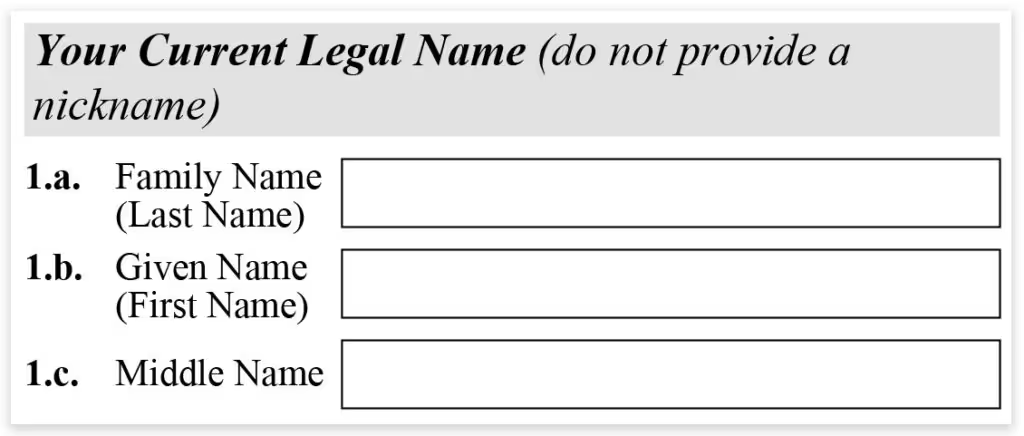
1.a. - 1.c. - This section is just asking for your legal name. Make sure to include your current full legal name. If you have two last names, you should include both.
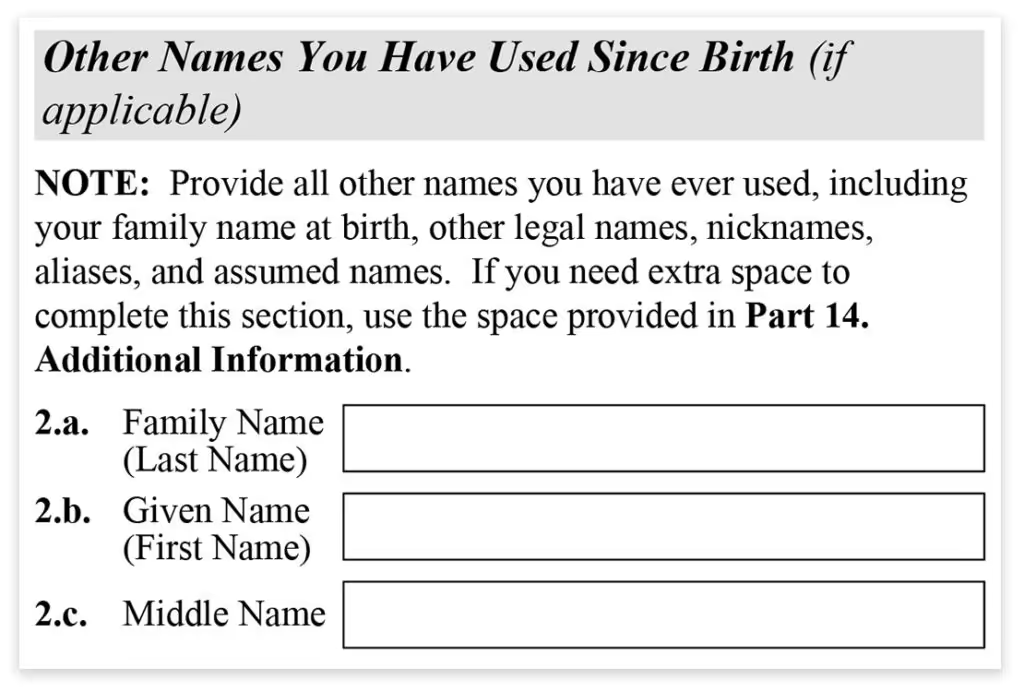
2.a. - 4.c. - This section is asking for other names you have used in your life. This could include your maiden name, name with previous spouses, family name at birth, any nicknames, aliases, or assumed names.
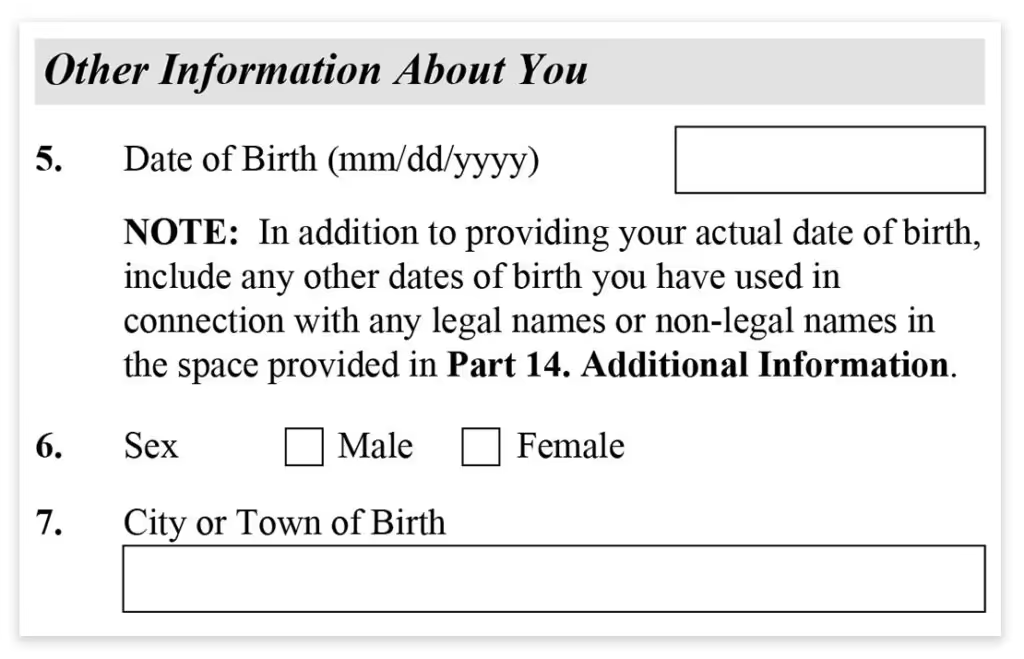
5. This is your date of birth in MM/DD/YYYY format.
6. Here you will choose your sex.
7. This is your city or town of birth. No need to include an address.
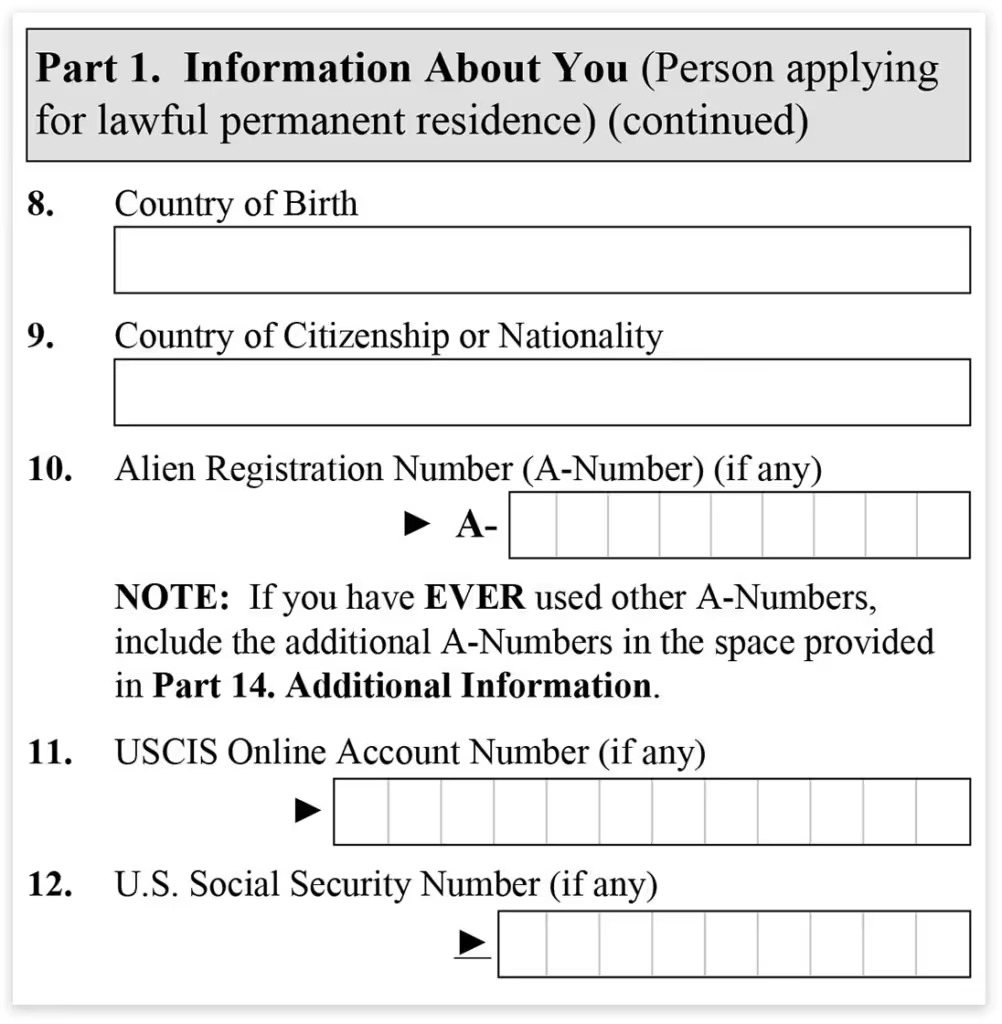
8. This is your country of birth.
9. This is your country of citizenship or nationality.
10. This is your Alien Registration number, if you have one. I can find this number on your work authorization (EAD) card.
11. This is your USCIS online registration number. You will only have this if you have created an account on USCIS.gov.
12. This is your US social security number if you have one.
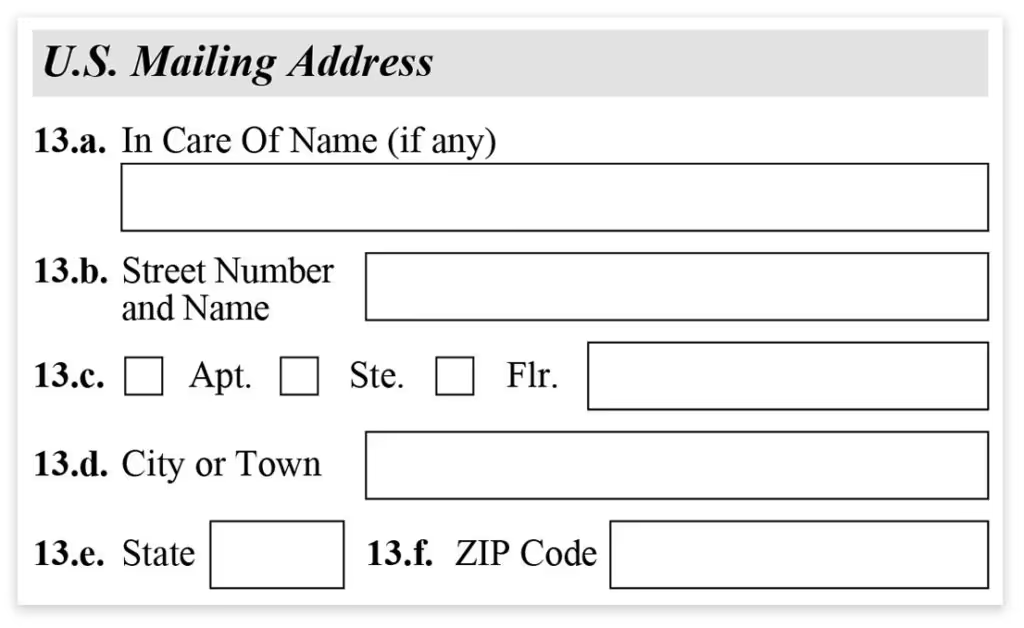
13.a. - 13.f. - This is your current U.S. mailing address. If someone else is receiving your mail for you, their name will be included in 13.a.
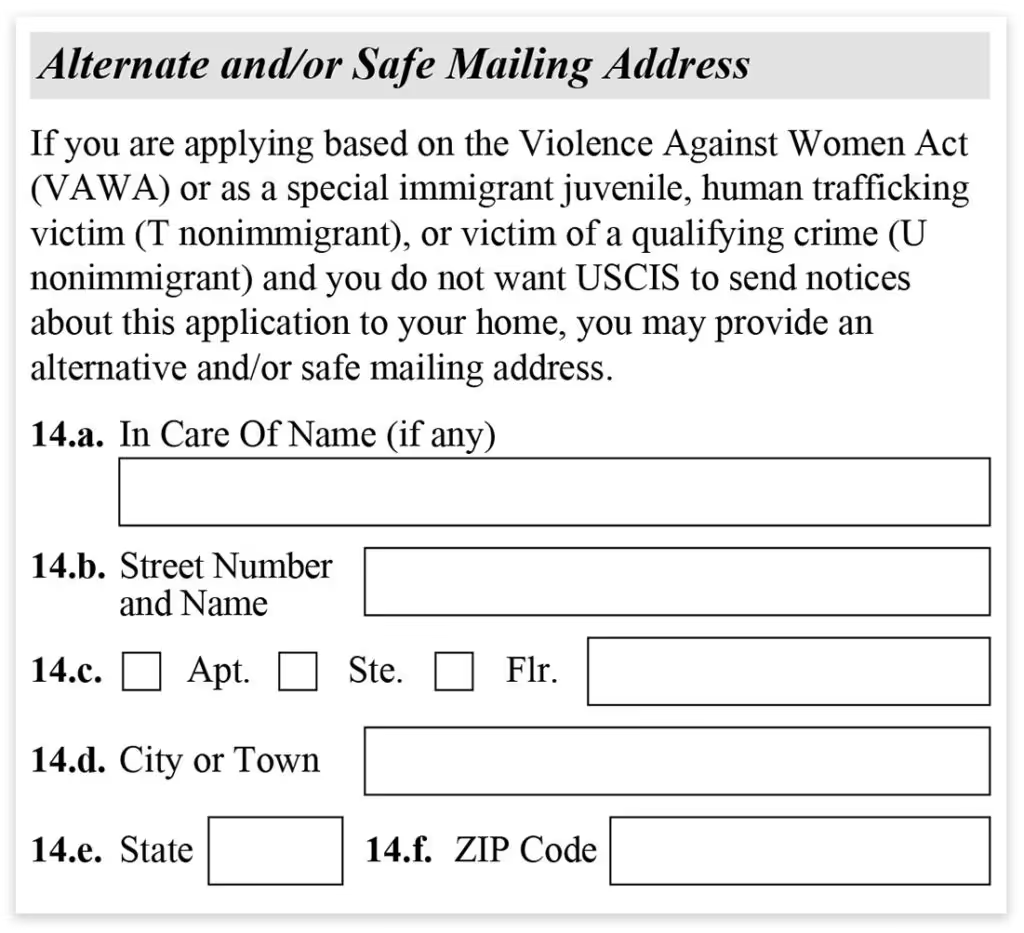
14.a. - 14.f. - This section is for a safe address for immigrants applying under Violence Against Women Act (VAWA), special immigrant juvenile, human trafficking victim (T nonimmigrant), or victim of a qualifying crime (U nonimmigrant). You should fill out this section if you don’t want the USCIS to send notices to your home.

15 - 19 - You will answer these questions if you came into the U.S. with a passport or travel document.
15. This is your passport number.
16. If you came in with a travel permit, you should include its number here.
17. This is the expiration date of your passport or travel document.
18. This will be the country that issued your passport or travel document.
19. If you have a nonimmigrant visa number from this passport, you will enter it here.
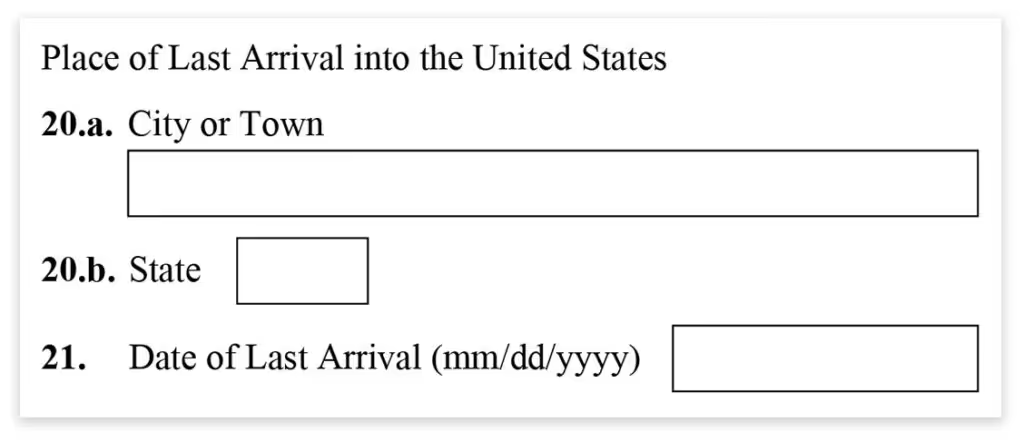
20.a. - 20.b. This is the city or town where you last entered the U.S. If you flew into the country, it will be the city with the airport where you went through U.S. Customs and Border Protection. For example, if you had a layover in the U.S. before reaching your final destination, you would have gone through Customs and Border Protection before your final destination. If you came into the country by land or sea, you will put the city with the border crossing or the city with the nearest border crossing where you arrived. Find your most recent I-94 here.
21. This is the date you last arrived in the U.S.
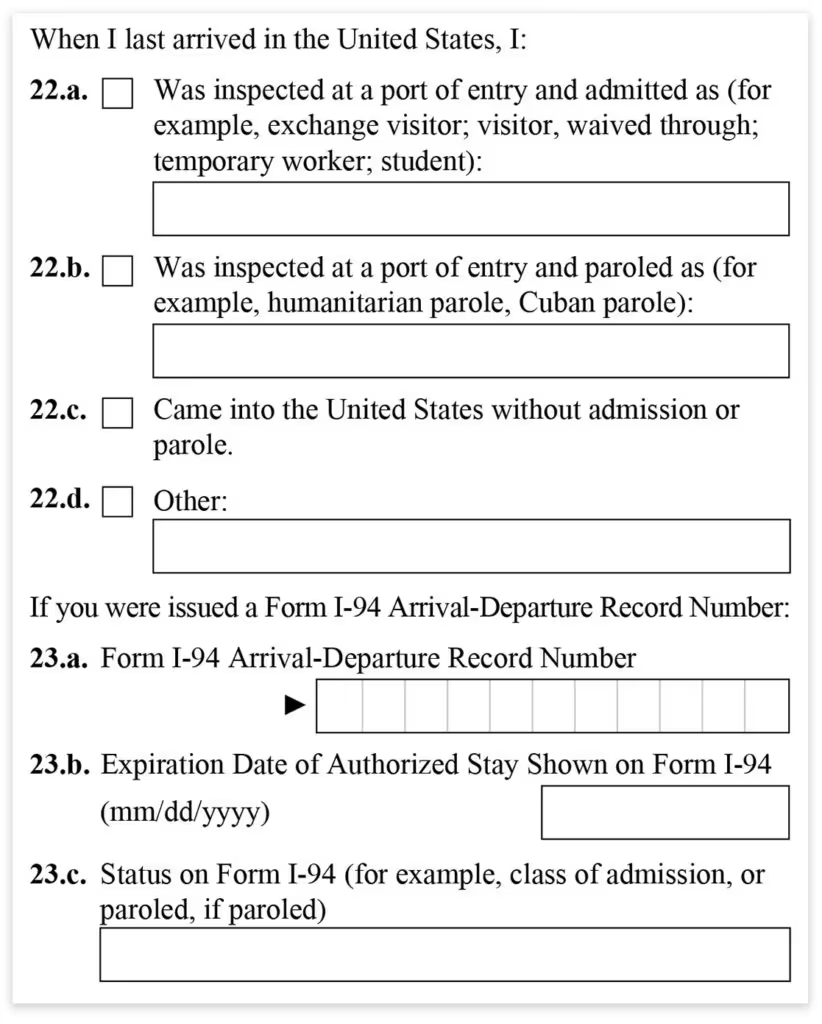
22.a - 22.d. Here you will check if you were inspected by an immigration officer. Being inspected by a U.S. Immigration Officer means that an immigration officer stamped your passport the last time you arrived in the U.S. If you were inspected by an officer, you will also put your admitted status such as F-1 (student) or B-2 (visitor for pleasure). If you don’t know the code for your visa designation, you can describe your status with a term like “student” or “visitor” or “asylee.” You can also find the code on the U.S. visa in your passport. If your status is humanitarian parole or Cuban parole, you will check 22.b. If you came into the U.S. without permission, you will check 22.c. If it were any other circumstance, you will check 22.d. and explain the circumstance. If you are unsure how to answer this question, try filling out your I-485 online with SimpleCitizen.
If you don’t remember any of this information, you can find most of it on your most recent Form I-94 on the Department of Homeland Security’s (DHS) website. Unless you came before April 30, 2013, then you will find form I-94 in your passport.
23.a. Here you will put your I-94 arrival-Departure record number. You can access your I-94 with the link above.
23.b. Here you will put the admit until date found on your I-94. This is almost always different from the U.S. visa found in your passport, so make sure to put the I-94 date. Under some status, mostly students and exchange program visitors, you will not have no exact expiration date. Instead, your I-94 will say “D/S” this stands for duration of status. If your I-94 says “D/S”, you will include that instead of a specific expiration date.
23.c. Here you will put the status indicated on your I-94. This could be your class of admissions or paroled if you are paroled.
If you currently do not have legal status, you should indicate that. If you have overstayed your I-94 expiration date, you should put “overstay”. If you entered without permission, you should put “EWI” (entry without inspection). If this is your situation, you may not be eligible to adjust status if you are the immediate relative of a U.S. citizen. Regardless, you may want to seek legal counsel if this is your situation.
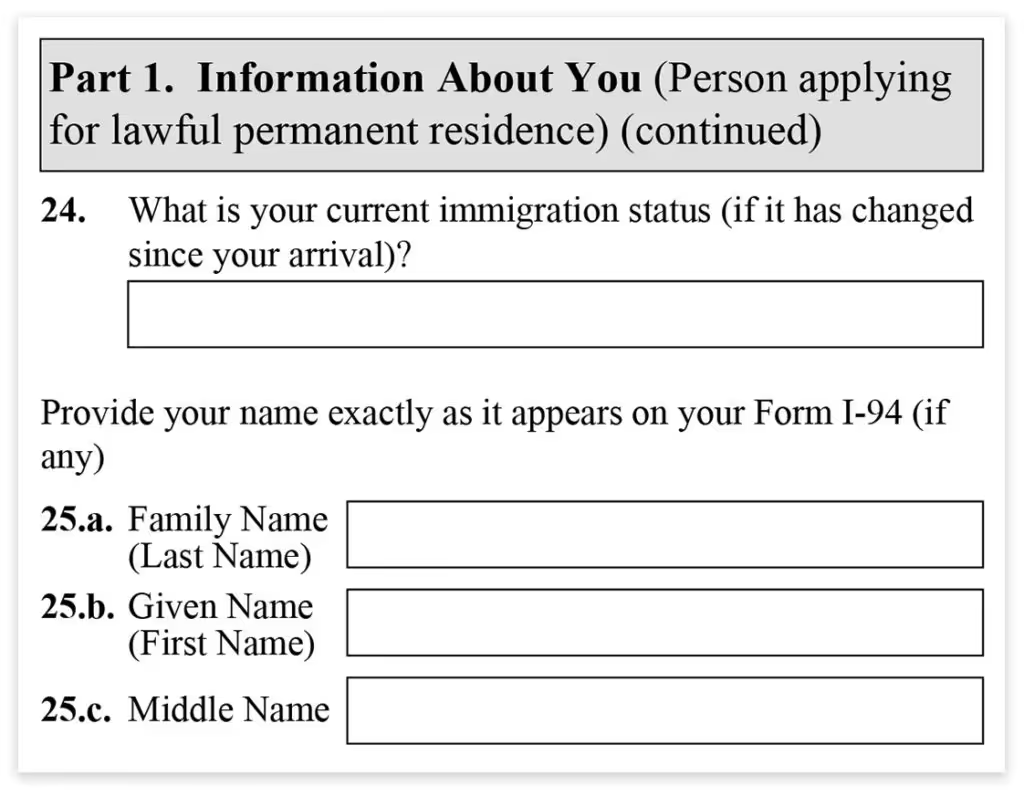
24. If your immigrant status has changed since your arrival, this is where you will include your current immigration status.
25.a. - 25.c. Here you will put your name EXACTLY as it appears on your I-94.
Part 2. Application Type or Filing Category
Page 3
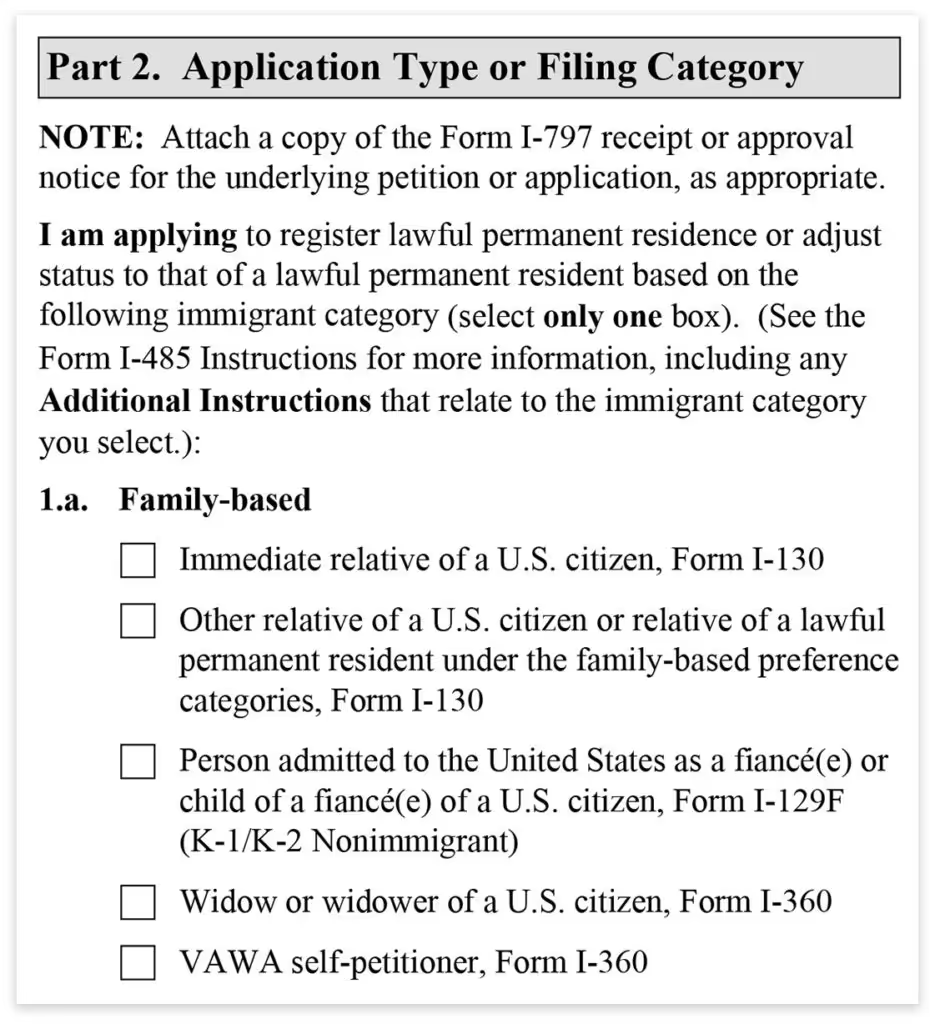
Part 2 asks details about your eligibility for adjusting status. If you have an approved immigrant petition, you should included the Form I-797 receipt or approval notice with form I-485.
1.a. - 1.g. Here is a list of different categories of eligibility. Select the one that applies to you.

2. This most likely does not apply to you. the Immigration and Nationality Act (INA) section 245(i); is an old law that applies to only a select group of people who came into the U.S. without permission. To find out if this applies to you, visit USCIS.gov.
Information About Your Immigrant Category
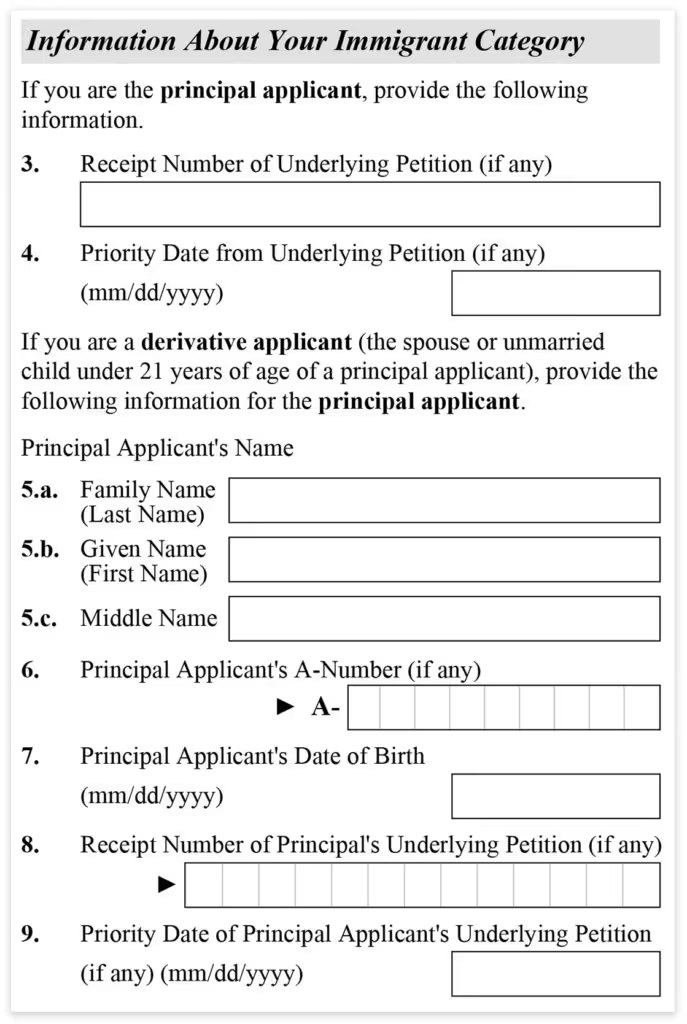
3. If you have an approved petition, you should include its receipt number here. A petition could be an Form I-130, Form I-140, Form I-360, Form I-526, or I-918. The receipt number will be included on the Form I-797 approval notice the USCIS mailed.
If you are filing concurrently (i.e. filling out the petition at the same time as the I-485), question 3 and 4 do not apply to you. Leave it blank.
4. If you have an approved petition, you should include its priority date here.
5 - 9. This section only applies to a derivative applicant. A derivative applicant is an immigrant who didn't need a separate petition rather depends on the petition of a principal applicant. This would most likely be a parent or spouse. In this sections, you will include the information for the principal applicant.
Part 3. Additional Information About you
Page 4
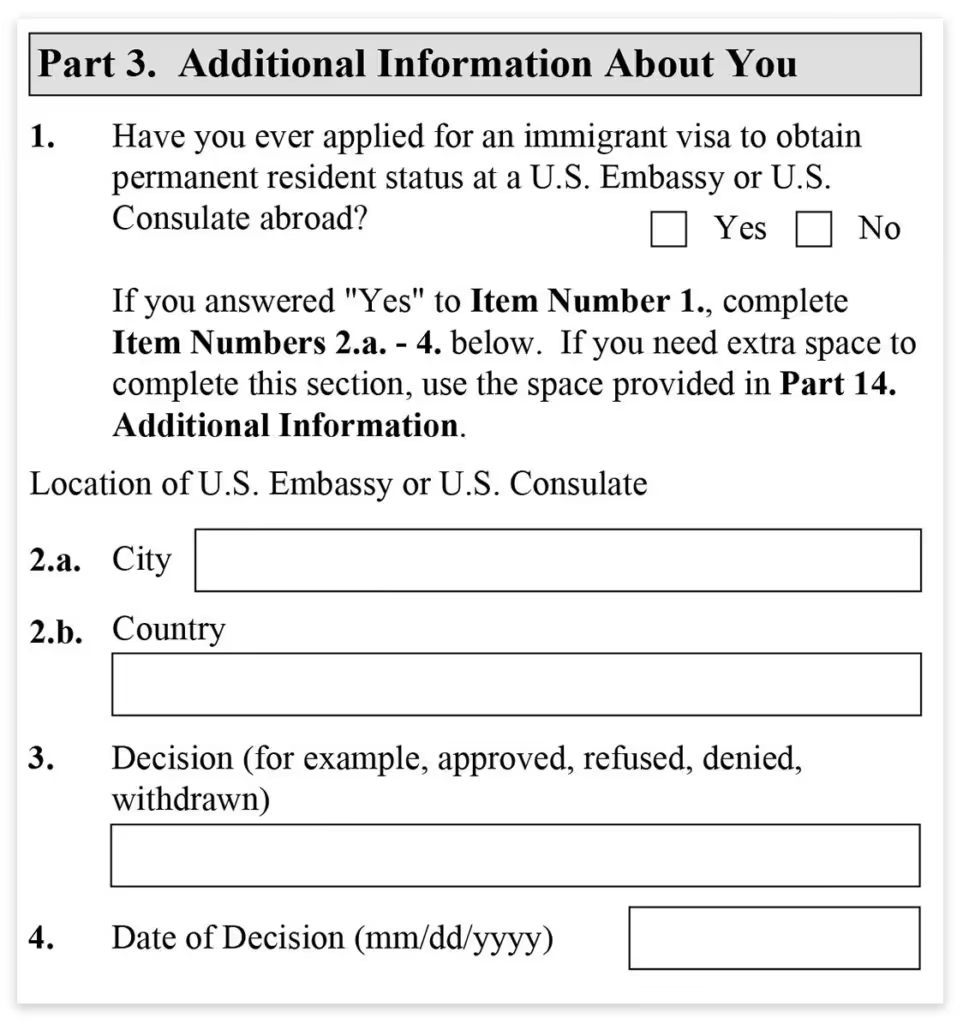
1 - 4. If you have ever applied for an immigrant visa (green card) at a U.S. Embassy or Consulate, you will fill out this section. In question three you will put either approved, denied, refused, or withdrawn. Don’t worry about explaining why the decision was made. That is not necessary.

5 - 7. Here you will provide your physical address history for the past five years. Provide your current address first. If you have had more than two addresses, you can include additional information in Part 14. Additional Information. This information is provided so the USCIS can perform a background check, so make sure it is as accurate as possible.
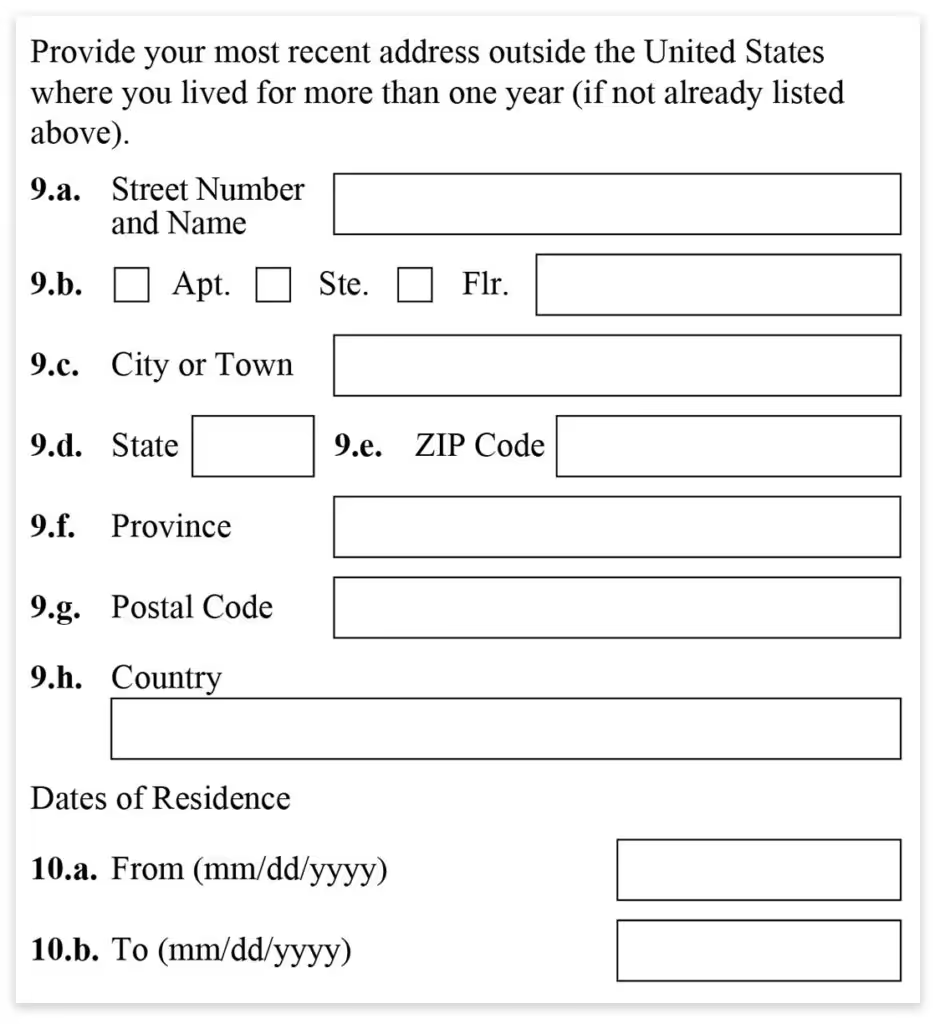
9.a. - 10.b. Here you should provide your most recent address outside the U.S. where you live for more than one year. However, if you have already provided it above, you do not need to include it here.

11 - 18.b. - This is also for a USCIS background check. You should provide your 5-year employment history. Again make sure it is as accurate as possible. If you have additional info, you can provide it in part 14. Additional Information. If you have not been working, enter “None” or “N/A”.
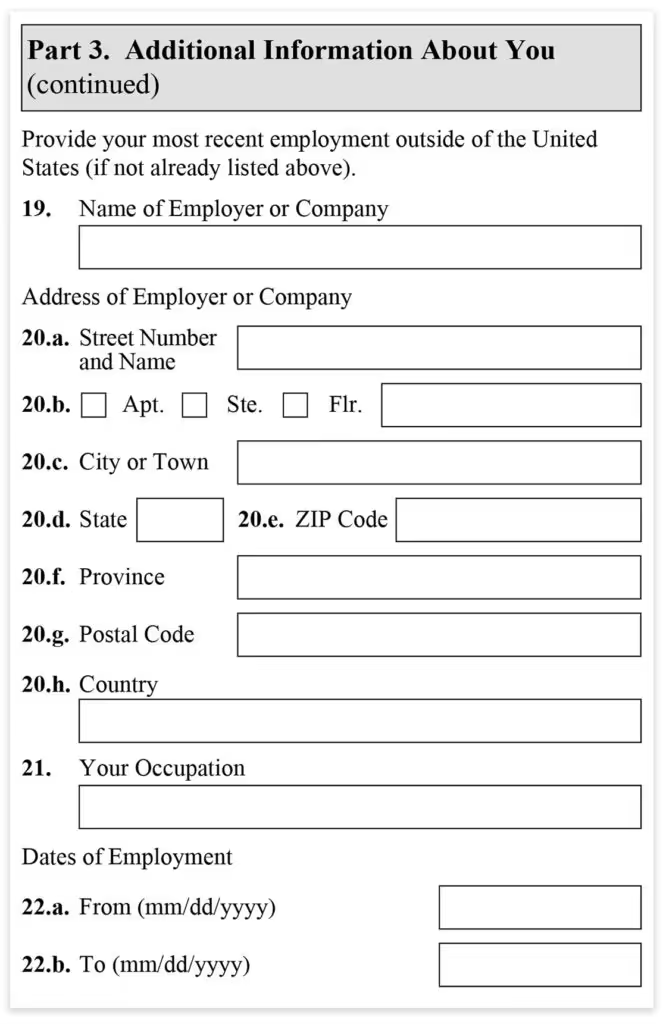
19 - 22.b. Here you should provide your most recent employment (even if you were there less than one year) outside the U.S. if you have not provided it in 11-18.
Part 4. Information About Your Parents
Page 6
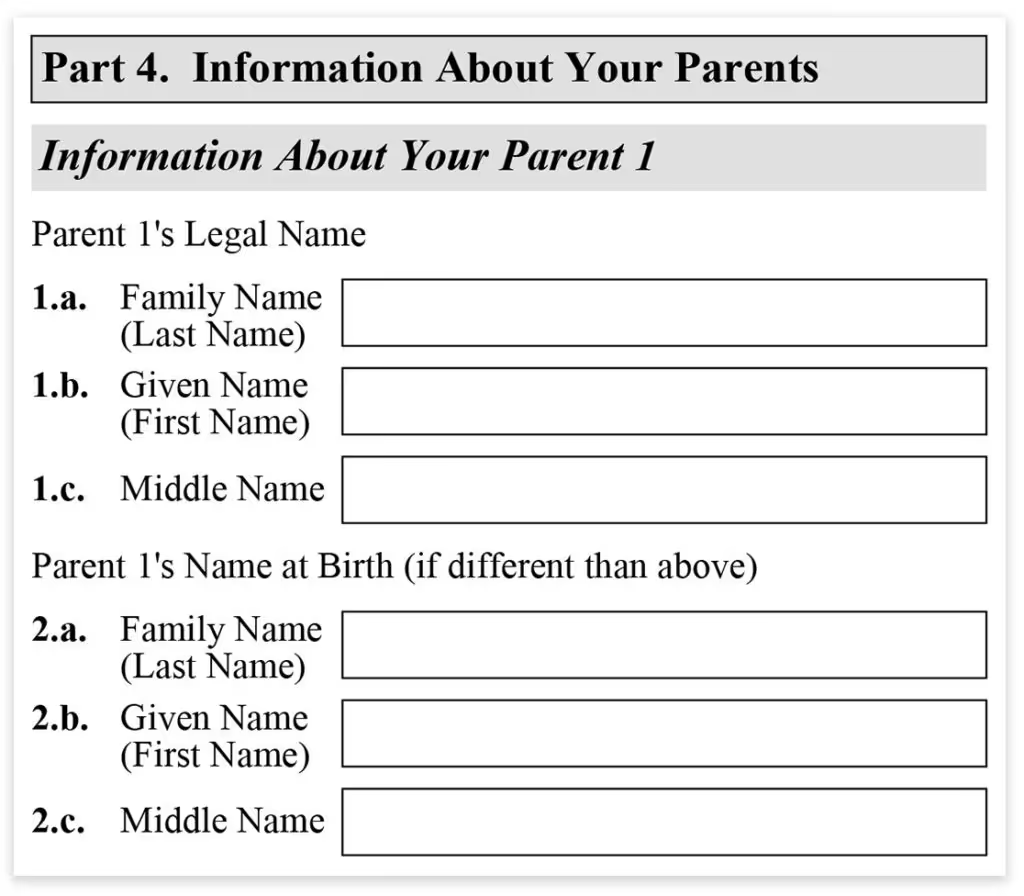
1.a. - 16. Part four asks background information about your parents. If they have passed away, you should answer DECEASED on question 7,8,15, and 16.
Part 5. Information About Your Marital History
Page 7
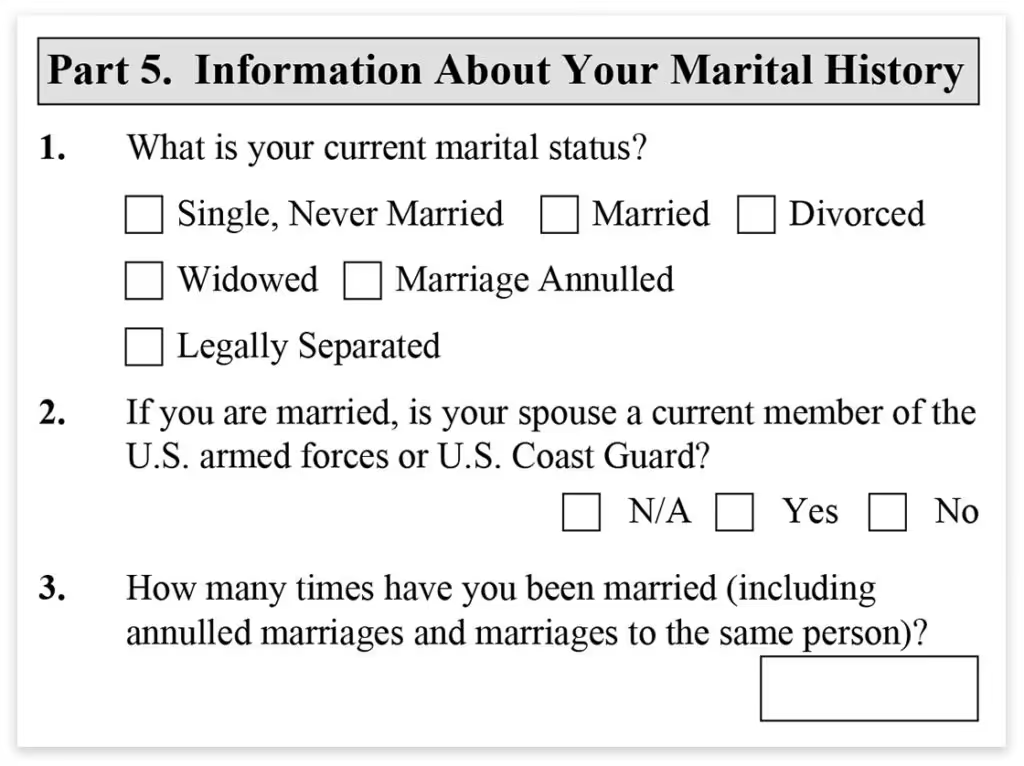
1 - 16.c. Part 5 gathers information about your marital history. This section is particularly important for applicants who are immigrating through marriage. The USCIS wants to verify that you are really eligible.
You will provide information about previous marriages. If you run out of space, again, use Part 14. Additional Information.
Part 6. Information About Your Children
Page 8
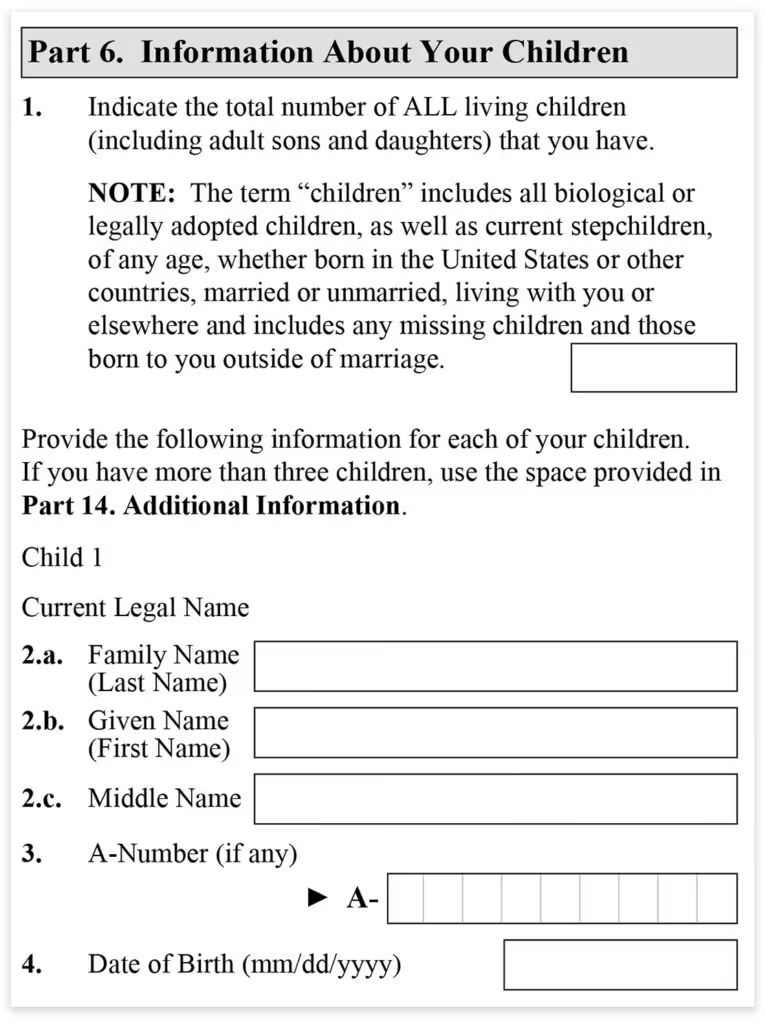
1 - 16. Part 6 is where you provide information about your children. First, you will indicate your total number of living children. You will then provide basic information about them. You should include both adult children and stepchildren here. Failure to do so could create doubt of your relationship if they want to immigrate to the U.S. in the future. If you need more space, go to Part 14. Additional Information.
Part 7. Biographic Information
Page 8

1. In this section, you will add some biographical information. This is so the USCIS can confirm your identity. First you will put if you are hispanic or not. Hispanic or latino is a person of Cuban, Mexican, Puerto Rican, South or Central American, or other Spanish culture or origin.
2. In this question, you will put your race. This can be confusing because there are only a few categories. Here is a guide for the USCIS:
- White is a person having origins in any of the original peoples of Europe, the Middle East, or North Africa.
- Asian is a person having origins in any of the original peoples of the Far East, Southeast Asia, or the Indian subcontinent including, for example, Cambodia, China, India, Japan, Korea, Malaysia, Pakistan, the Philippine Islands, Thailand, and Vietnam.
- Black or African American is a person having origins in any of the black racial groups of Africa.
- American Indian or Alaska Native is a person having origins in any of the original peoples of North and South America (including Central America), and who maintains tribal affiliation or community attachment.
- Native Hawaiian or Other Pacific Islander is a person having origins in any of the original peoples of Hawaii, Guam, Samoa, or other Pacific Islands.
3 - 6. For the remaining questions, you will put your height, weight, eye color, and hair color.
Part 8. General Eligibility and Inadmissibility Grounds
Page 9
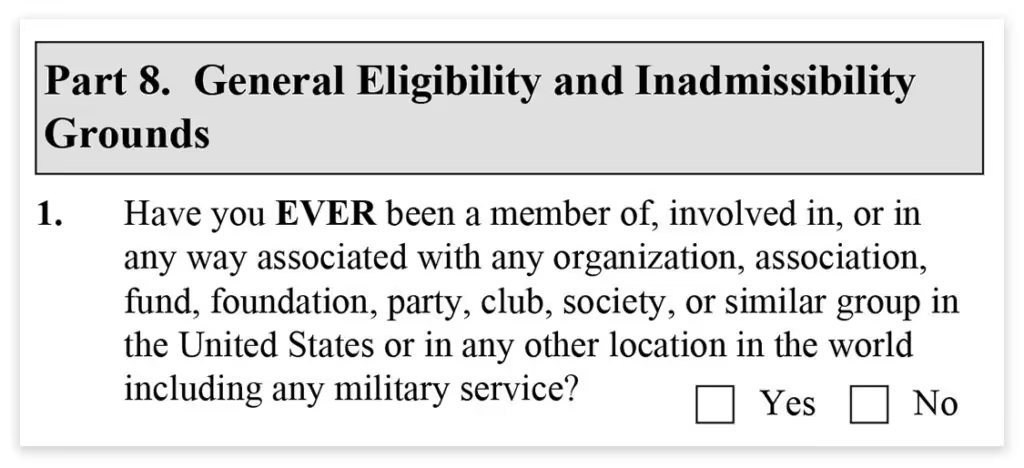
This section is long. Don’t stress though. The purpose of this section is to make sure you have not done anything to make you inadmissible to the U.S. Being inadmissible means you would not be eligible for entrance to the U.S. at all due to crimes, immigration violations, or other reasons. If you have been involved in any organization that promotes violence, you should seek the advice of an attorney.
1 - 13.b. In this section, you will include any organization, association, fund, foundation, party, club society, etc in which you have been involved. This is mostly to determine if you have been involved in a violent organization, but including volunteer or religious organizations can help show the USCIS officer that you are a moral person.
14 - 80.b. Most of these answers should be “no”. However, you have some “yes”. If you have overstayed a visa, you should answer “yes” on question 17. You can then explain the circumstances in Part 14. Additional Information. On question 24.a. -24.c. you may also answer yes and explain the circumstances around your J-1 visa two-year requirement.
You should also disclose all arrest. Even if it was a mistake or for a minor crime, you should include them. You do not have to include diving tickets unless drugs or alcohol was involved or if you were fined over 500 dollars. If you have any arrests, you should attach documentation with your Form I-485.
If you have received public assistance, you could be found inadmissible. If this is your situation, you should consult with an attorney before mailing in your Form I-485.
Remember: Never lie on any immigration form. If the USCIS discovers that you have lied on a form, you can be found inadmissible.
Part 9. Accommodations for Individual with Disabilities and/or Impairments
Page 14
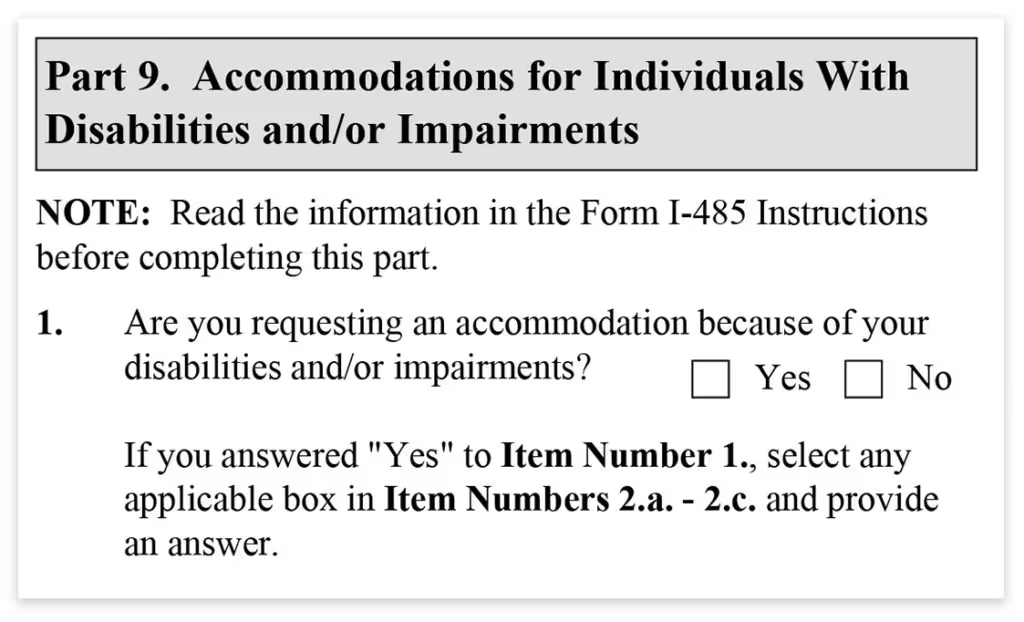
Part nine asks if you have any disabilities or impairments that need accommodations for your interview. This could be a sign language interpreter. You should explain your need in this section.
Part 10. Applicant's Statement
Page 15
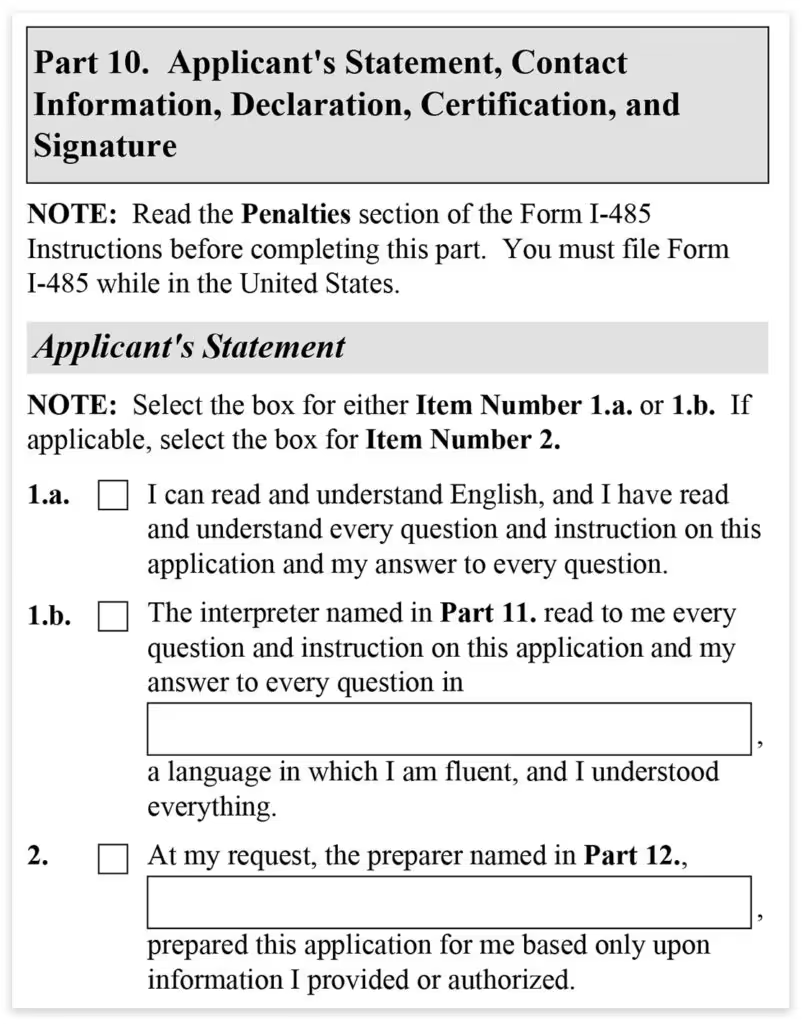
Congratulations, you are about done! Here is where you sign Form I-485. You will also check that you can read and understand English so that they know you understand what you are signing. You will also include your contact information.
Part 11. Interpreter's Contact Information, Certification, and Signature
Page 15
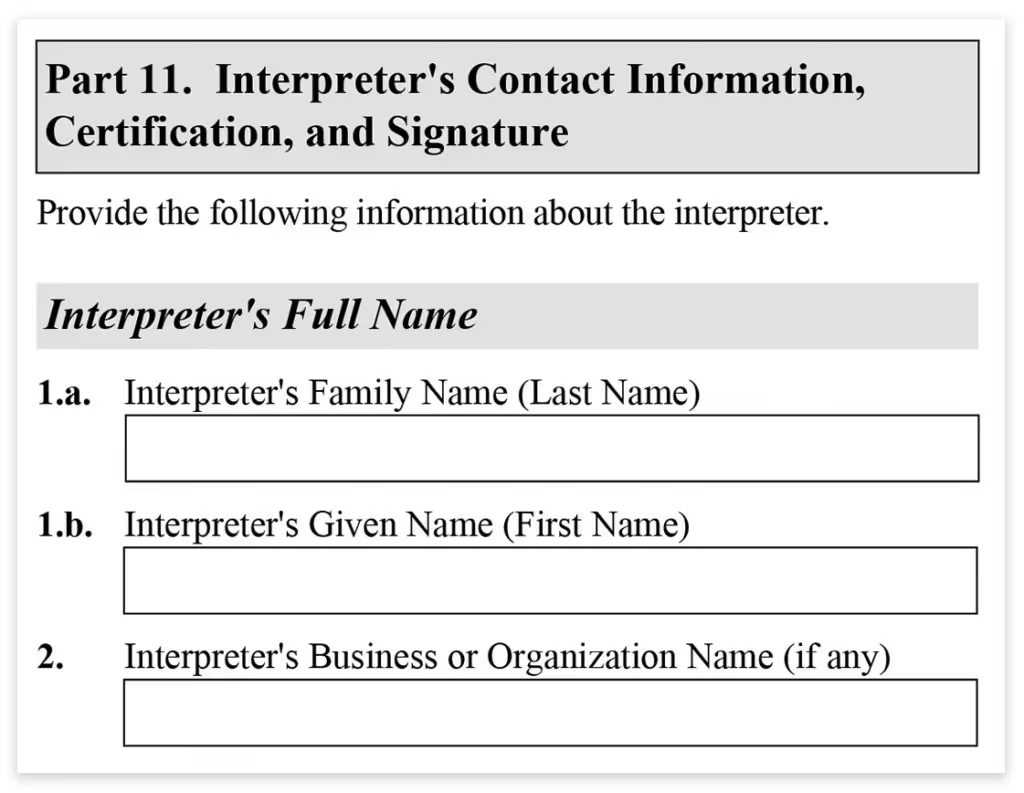
If you don’t speak English and have relied on an interpreter to fill out Form I-485, this is where he/she will sign. You don not need to know English to get a green card, but you will need an interpreter at your USCIS interview.
Part 12. Contact Information, Declaration, and Signature
Page 16

This is where an attorney would include their credentials. You probably will leave this blank considering you’ve been using this step-by-step guide.
Part 13. Signature at Interview
Page 17
This is the section where you will sign at the USCIS interview! Until your interview, leave it blank. Congratulations, you’ve finished!
Related
Form I-485
Articles
Begin Your Immigration Journey Today with SimpleCitizen!
Why spend more time and money on countless legal headaches, when you could just use SimpleCitizen and focus on what matters most – being with those you love! Find new opportunities, start new adventures, and bring your family together with SimpleCitizen today!

